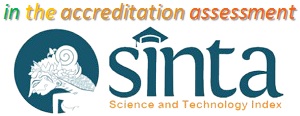The Role of Virtual Reality in Psychiatric Treatment: A Literature Review
DOI:
https://doi.org/10.37034/medinftech.v3i1.103Keywords:
Anxiety Disorders, Obsessive-Compulsive Disorder, Post Traumatic Stress Disorder, Virtual Reality Exposure Therapy, Virtual RealityAbstract
Virtual reality (VR) is one of the immersive breakthroughs of rapidly growing technology. This VR technology, offers a 3-dimensional virtual environment to users while enabling interaction with this environment in various ways. VR can be seen in various sectors, including mental health care. Virtual Reality Exposure Therapy (VRET) has been established as an innovative approach for treating psychiatric disorders like social anxiety, obsessive-compulsive disorder (OCD), post-traumatic disorder, phobias, and other disorders (psychosis, functional neurological disorder (FND), and neuropsychological disorders) by offering individuals more controlled, interactive virtual environments that simulate triggering situations. In this review, the role of VR as a psychiatric treatment is explored. In total 50 articles were reviewed and reported in the study. Although the findings are promising, some limitations and challenges are detected. One of the concerns is relapse rates; no detailed studies are addressing it. In addition, in studies, cybersickness is reported, which can cause dizziness, nausea, and headache. In conclusion, while studies support VRET’s effectiveness, it is necessary to investigate further its long-term effects. Future studies should concentrate on conducting larger clinical trials and incorporating VR into standard therapeutic practices to fully harness its potential in treating mental health issues.
Downloads
References
M. A. Gigante, “Virtual Reality: Definitions, History and Applications,” in Virtual Reality Systems, Elsevier, 1993, pp. 3–14.
I. E. Sutherland, “A head-mounted three dimensional display,” 1968, vol. 33, no. pt 1, pp. 757–764, doi: 10.1145/1476589.1476686.
D. C. Miller and J. A. Thorpe, “SIMNET: The Advent of Simulator Networking,” Proc. IEEE, vol. 83, no. 8, pp. 1114–1123, 1995, doi: 10.1109/5.400452.
S. S. Fisher, E. M. Wenzel, C. Coler, and M. W. McGreevy, “Virtual Interface Environment Workstations,” Proc. Hum. Factors Soc. Annu. Meet., vol. 32, no. 2, pp. 91–95, Oct. 1988, doi: 10.1177/154193128803200219.
M. M. North and S. M. North, “Virtual reality therapy,” in Computer-assisted and web-based innovations in psychology, special education, and health., San Diego, CA, US: Elsevier Academic Press, 2016, pp. 141–165.
M. M. North, S. M. North, and J. R. Coble, “Virtual Reality Therapy: an Effective Treatment for the Fear of Public Speaking,” Int. J. Virtual Real., vol. 3, no. 3, pp. 1–6, 1998, doi: 10.20870/IJVR.1998.3.3.2625.
B. O. Rothbaum, L. Hodges, B. A. Watson, G. D. Kessler, and D. Opdyke, “Virtual reality exposure therapy in the treatment of fear of flying: A case report,” Behav. Res. Ther., vol. 34, no. 5–6, pp. 477–481, 1996, doi: 10.1016/0005-7967(96)00007-1.
P. L. Anderson et al., “Virtual reality exposure therapy for social anxiety disorder: A randomized controlled trial,” J. Consult. Clin. Psychol., vol. 81, no. 5, pp. 751–760, 2013, doi: 10.1037/a0033559.
S. Bouchard et al., “Virtual reality compared with in vivo exposure in the treatment of social anxiety disorder: A three-arm randomised controlled trial,” Br. J. Psychiatry, vol. 210, no. 4, pp. 276–283, Jan. 2017, doi: 10.1192/bjp.bp.116.184234.
R. M. Baños, V. Guillen, S. Quero, A. García-Palacios, M. Alcaniz, and C. Botella, “A virtual reality system for the treatment of stress-related disorders: A preliminary analysis of efficacy compared to a standard cognitive behavioral program,” Int. J. Hum. Comput. Stud., vol. 69, no. 9, pp. 602–613, Aug. 2011, doi: 10.1016/j.ijhcs.2011.06.002.
A. J. Cullen, N. L. Dowling, R. Segrave, A. Carter, and M. Yücel, “Exposure therapy in a virtual environment: Validation in obsessive compulsive disorder,” J. Anxiety Disord., vol. 80, p. 102404, May 2021, doi: 10.1016/j.janxdis.2021.102404.
R. Javaherirenani, S. S. Mortazavi, M. Shalbafan, A. Ashouri, and A. R. Farani, “Virtual reality exposure and response prevention in the treatment of obsessive-compulsive disorder in patients with contamination subtype in comparison with in vivo exposure therapy: a randomized clinical controlled trial,” BMC Psychiatry, vol. 22, no. 1, Dec. 2022, doi: 10.1186/s12888-022-04402-3.
D. C. Beidel et al., “Trauma management therapy with virtual-reality augmented exposure therapy for combat-related PTSD: A randomized controlled trial,” J. Anxiety Disord., vol. 61, pp. 64–74, 2019, doi: https://doi.org/10.1016/j.janxdis.2017.08.005.
J. Difede and H. G. Hoffman, “Virtual reality exposure therapy for World Trade Center post-traumatic stress disorder: A case report,” Cyberpsychology Behav., vol. 5, no. 6, pp. 529–535, Dec. 2002, doi: 10.1089/109493102321018169.
R. Pot-Kolder et al., “Cost-Effectiveness of Virtual Reality Cognitive Behavioral Therapy for Psychosis: Health-Economic Evaluation Within a Randomized Controlled Trial,” J. Med. Internet Res., vol. 22, no. 5, May 2020, doi: 10.2196/17098.
E. Orr et al., “Virtual reality in the management of stress and anxiety disorders: A retrospective analysis of 61 people treated in the metaverse,” Heliyon, vol. 9, no. 7, p. e17870, Jul. 2023, doi: 10.1016/J.HELIYON.2023.E17870.
M. Rubin, K. Muller, M. M. Hayhoe, and M. J. Telch, “Attention guidance augmentation of virtual reality exposure therapy for social anxiety disorder: a pilot randomized controlled trial,” Cogn. Behav. Ther., vol. 51, no. 5, pp. 371–387, Sep. 2022, doi: 10.1080/16506073.2022.2053882.
H. S. Jeong, J. H. Lee, H. E. Kim, and J. J. Kim, “Appropriate Number of Treatment Sessions in Virtual Reality-Based Individual Cognitive Behavioral Therapy for Social Anxiety Disorder,” J. Clin. Med., vol. 10, no. 5, pp. 1–11, Mar. 2021, doi: 10.3390/JCM10050915.
H. Lee, J. K. Choi, D. Jung, J. W. Hur, and C. H. Cho, “The Effects of Virtual Reality Treatment on Prefrontal Cortex Activity in Patients With Social Anxiety Disorder: Participatory and Interactive Virtual Reality Treatment Study,” J. Med. Internet Res., vol. 23, no. 12, Dec. 2021, doi: 10.2196/31844.
P. Lindner et al., “Virtual Reality exposure therapy for public speaking anxiety in routine care: a single-subject effectiveness trial,” Cogn. Behav. Ther., vol. 50, no. 1, pp. 67–87, 2021, doi: 10.1080/16506073.2020.1795240.
R. Reeves, A. Elliott, D. Curran, K. Dyer, and D. Hanna, “360° Video virtual reality exposure therapy for public speaking anxiety: A randomized controlled trial,” J. Anxiety Disord., vol. 83, p. 102451, Oct. 2021, doi: 10.1016/j.janxdis.2021.102451.
N. H. Zainal, W. W. Chan, A. P. Saxena, C. B. Taylor, and M. G. Newman, “Pilot randomized trial of self-guided virtual reality exposure therapy for social anxiety disorder,” Behav. Res. Ther., vol. 147, p. 103984, Dec. 2021, doi: 10.1016/J.BRAT.2021.103984.
S. Stupar-Rutenfrans, L. E. H. Ketelaars, and M. S. Van Gisbergen, “Beat the Fear of Public Speaking: Mobile 360° Video Virtual Reality Exposure Training in Home Environment Reduces Public Speaking Anxiety,” Cyberpsychol. Behav. Soc. Netw., vol. 20, no. 10, pp. 624–633, Oct. 2017, doi: 10.1089/CYBER.2017.0174.
H. S. Wallach, M. P. Safir, and M. Bar-Zvi, “Virtual reality cognitive behavior therapy for public speaking anxiety: A randomized clinical trial,” Behav. Modif., vol. 33, no. 3, pp. 314–338, May 2009, doi: 10.1177/0145445509331926.
M. Slater, D. P. Pertaub, C. Barker, and D. M. Clark, “An experimental study on fear of public speaking using a virtual environment,” Cyberpsychol. Behav., vol. 9, no. 5, pp. 627–633, Oct. 2006, doi: 10.1089/CPB.2006.9.627.
I. Fajnerová, A. Francová, K. Taranzová, B. Darmová, E. Kosová, and P. Stopková, “Virtual reality environment for exposure therapy in obsessive–compulsive disorder: a validation study,” Virtual Real., vol. 27, no. 3, pp. 2691–2701, Sep. 2023, doi: 10.1007/S10055-023-00837-5/FIGURES/3.
M. Zadbar, G. Manshaei, and A. A. Jeshvaghani, “Comparison of the Effectiveness of Virtual Reality Exposure Therapy with Cognitive-Behavioral Therapy on Obsessive-Compulsive Disorder Symptoms in People with Obsessive-Compulsive Disorder,” J. Assess. Res. Appl. Couns., vol. 5, no. 4, pp. 113–124, Oct. 2023, doi: 10.61838/KMAN.JARAC.5.4.13.
F. Miegel et al., “Exposure and Response Prevention in Virtual Reality for Patients with Contamination-Related Obsessive–Compulsive Disorder: a Case Series,” Psychiatr. Q., vol. 93, no. 3, pp. 861–882, Sep. 2022, doi: 10.1007/s11126-022-09992-5.
M. Inozu, U. Celikcan, B. Akin, and N. Mustafaoğlu Cicek, “The use of virtual reality (VR) exposure for reducing contamination fear and disgust: Can VR be an effective alternative exposure technique to in vivo?,” J. Obsessive. Compuls. Relat. Disord., vol. 25, p. 100518, Apr. 2020, doi: 10.1016/J.JOCRD.2020.100518.
M. J. Van Bennekom, M. S. Kasanmoentalib, P. P. De Koning, and D. Denys, “A Virtual Reality Game to Assess Obsessive-Compulsive Disorder,” Cyberpsychology, Behav. Soc. Netw., vol. 20, no. 11, pp. 718–722, Nov. 2017, doi: 10.1089/cyber.2017.0107.
M. Laforest, S. Bouchard, J. Bossé, and O. Mesly, “Effectiveness of in virtuo exposure and response prevention treatment using cognitive-behavioral therapy for obsessive-compulsive disorder: A study based on a single-case study protocol,” Front. Psychiatry, vol. 7, no. JUN, p. 99, Jun. 2016, doi: 10.3389/fpsyt.2016.00099.
K. Kim, D. Roh, S. I. Kim, and C. H. Kim, “Provoked arrangement symptoms in obsessive-compulsive disorder using a virtual environment: A preliminary report,” Comput. Biol. Med., vol. 42, no. 4, pp. 422–427, Apr. 2012, doi: 10.1016/j.compbiomed.2011.12.010.
K. Kim et al., “Anxiety provocation and measurement using virtual reality in patients with obsessive-compulsive disorder,” Cyberpsychology Behav., vol. 11, no. 6, pp. 637–641, 2008, doi: 10.1089/cpb.2008.0003.
S. I. Kim et al., “Virtual reality applications for patients with schizophrenia,” J. Cyber Ther. Rehabil., vol. 1, no. 1, pp. 101–112, 2008, [Online]. Available: https://www.scopus.com/inward/record.uri?eid=2-s2.0-77952895556&partnerID=40&md5=d020f3a716b59f344bb6415cf0b7da01.
P. Best, S. Kupeli-Holt, J. D’Arcy, A. Elliot, M. Duffy, and T. Van Daele, “Low-Cost Virtual Reality to Support Imaginal Exposure Within PTSD Treatment: A Case Report Study Within a Community Mental Healthcare Setting,” Cogn. Behav. Pract., vol. 31, no. 4, pp. 577–594, Nov. 2023, doi: 10.1016/j.cbpra.2023.03.003.
M. H. Trahan, R. H. Morley, E. E. Nason, N. Rodrigues, L. Huerta, and V. Metsis, “Virtual Reality Exposure Simulation for Student Veteran Social Anxiety and PTSD: A Case Study,” Clin. Soc. Work J., vol. 49, no. 2, pp. 220–230, Jun. 2021, doi: 10.1007/s10615-020-00784-7.
M. van ’t Wout-Frank, M. T. Shea, V. C. Larson, B. D. Greenberg, and N. S. Philip, “Combined transcranial direct current stimulation with virtual reality exposure for posttraumatic stress disorder: Feasibility and pilot results,” Brain Stimul., vol. 12, no. 1, pp. 41–43, 2019, doi: 10.1016/j.brs.2018.09.011.
J. G. Beck, S. A. Palyo, E. H. Winer, B. E. Schwagler, and E. J. Ang, “Virtual Reality Exposure Therapy for PTSD Symptoms After a Road Accident: An Uncontrolled Case Series,” Behav. Ther., vol. 38, no. 1, pp. 39–48, 2007, doi: 10.1016/j.beth.2006.04.001.
J. Andersson, J. Hallin, A. Tingström, and J. Knutsson, “Virtual reality exposure therapy for fear of spiders: an open trial and feasibility study of a new treatment for arachnophobia,” Nord. J. Psychiatry, vol. 78, no. 2, pp. 128–136, 2024, doi: 10.1080/08039488.2023.2279643.
K. Roesmann et al., “Mechanisms of action underlying virtual reality exposure treatment in spider phobia: Pivotal role of within-session fear reduction,” J. Anxiety Disord., vol. 100, Dec. 2023, doi: 10.1016/J.JANXDIS.2023.102790.
K. Roesmann et al., “Behavioral and Magnetoencephalographic Correlates of Fear Generalization Are Associated With Responses to Later Virtual Reality Exposure Therapy in Spider Phobia,” Biol. Psychiatry Cogn. Neurosci. Neuroimaging, vol. 7, no. 2, pp. 221–230, Feb. 2022, doi: 10.1016/J.BPSC.2021.07.006.
K. Roesmann et al., “Neural correlates of fear conditioning are associated with treatment-outcomes to behavioral exposure in spider phobia – Evidence from magnetoencephalography,” NeuroImage Clin., vol. 35, Jan. 2022, doi: 10.1016/j.nicl.2022.103046.
P. Lindner et al., “Experiences of Gamified and Automated Virtual Reality Exposure Therapy for Spider Phobia: Qualitative Study,” JMIR serious games, vol. 8, no. 2, Apr. 2020, doi: 10.2196/17807.
A. Miloff et al., “Automated virtual reality exposure therapy for spider phobia vs. in-vivo one-session treatment: A randomized non-inferiority trial,” Behav. Res. Ther., vol. 118, pp. 130–140, Jul. 2019, doi: 10.1016/J.BRAT.2019.04.004.
N. Tardif, C. É. Therrien, and S. Bouchard, “Re-Examining Psychological Mechanisms Underlying Virtual Reality-Based Exposure for Spider Phobia,” Cyberpsychology, Behav. Soc. Netw., vol. 22, no. 1, pp. 39–45, Jan. 2019, doi: 10.1089/cyber.2017.0711.
S. Minns et al., “Immersive 3D exposure-based treatment for spider fear: A randomized controlled trial,” J. Anxiety Disord., vol. 58, pp. 1–7, Aug. 2018, doi: 10.1016/j.janxdis.2018.05.006.
D. Michaliszyn, A. Marchand, S. Bouchard, M. O. Martel, and J. Poirier-Bisson, “A randomized, controlled clinical trial of in virtuo and in vivo exposure for spider phobia,” Cyberpsychology, Behav. Soc. Netw., vol. 13, no. 6, pp. 689–695, Dec. 2010, doi: 10.1089/cyber.2009.0277.
A. Miloff, P. Lindner, W. Hamilton, L. Reuterskiöld, G. Andersson, and P. Carlbring, “Single-session gamified virtual reality exposure therapy for spider phobia vs. traditional exposure therapy: study protocol for a randomized controlled non-inferiority trial,” Trials, vol. 17, no. 1, Feb. 2016, doi: 10.1186/S13063-016-1171-1.
Y. Shiban, J. Brütting, P. Pauli, and A. Mühlberger, “Fear reactivation prior to exposure therapy: Does it facilitate the effects of VR exposure in a randomized clinical sample?,” J. Behav. Ther. Exp. Psychiatry, vol. 46, pp. 133–140, Mar. 2015, doi: 10.1016/J.JBTEP.2014.09.009.
A. Garcia-Palacios, C. Botella, H. Hoffman, and S. Fabregat, “Comparing acceptance and refusal rates of virtual reality exposure vs. in vivo exposure by patients with specific phobias,” Cyberpsychology Behav., vol. 10, no. 5, pp. 722–724, 2007, doi: 10.1089/cpb.2007.9962.
F. H. Wilhelm, M. C. Pfaltz, J. J. Gross, I. B. Mauss, S. I. Kim, and B. K. Wiederhold, “Mechanisms of virtual reality exposure therapy: The role of the behavioral activation and behavioral inhibition systems,” Appl. Psychophysiol. Biofeedback, vol. 30, no. 3, pp. 271–284, 2005, doi: 10.1007/s10484-005-6383-1.
S. Côté and S. Bouchard, “Documenting the efficacy of virtual realityexposure with psychophysiological and information processing measures,” Appl. Psychophysiol. Biofeedback, vol. 30, no. 3, pp. 217–232, Sep. 2005, doi: 10.1007/S10484-005-6379-X/METRICS.
G. Robillard, S. Bouchard, T. Fournier, and P. Renaud, “Anxiety and Presence during VR Immersion: A Comparative Study of the Reactions of Phobic and Non-phobic Participants in Therapeutic Virtual Environments Derived from Computer Games,” Cyberpsychology Behav., vol. 6, no. 5, pp. 467–476, Oct. 2003, doi: 10.1089/109493103769710497.
A. Garcia-Palacios, H. Hoffman, A. Carlin, T. A. Furness, and C. Botella, “Virtual reality in the treatment of spider phobia: a controlled study,” Behav. Res. Ther., vol. 40, no. 9, pp. 983–993, Sep. 2002, doi: 10.1016/S0005-7967(01)00068-7.
B. K. Wiederhold, D. P. Jang, S. I. Kim, and M. D. Wiederhold, “Physiological monitoring as an objective tool in virtual reality therapy,” Cyberpsychol. Behav., vol. 5, no. 1, pp. 77–82, 2002, doi: 10.1089/109493102753685908.
A. S. Carlin, H. G. Hoffman, and S. Weghorst, “Virtual reality and tactile augmentation in the treatment of spider phobia: a case report,” Behav. Res. Ther., vol. 35, no. 2, pp. 153–158, Feb. 1997, doi: 10.1016/S0005-7967(96)00085-X.
P. Lindner et al., “Experiences of gamified and automated virtual reality exposure therapy for spider phobia: Qualitative study,” JMIR Serious Games, vol. 8, no. 2, Apr. 2020, doi: 10.2196/17807.
A. Garcia-Palacios, C. Botella, H. Hoffman, and S. Fabregat, “Comparing acceptance and refusal rates of virtual reality exposure vs. in vivo exposure by patients with specific phobias,” Cyberpsychol. Behav., vol. 10, no. 5, pp. 722–724, Oct. 2007, doi: 10.1089/CPB.2007.9962.
F. H. Wilhelm, M. C. Pfaltz, J. J. Gross, I. B. Mauss, S. I. Kim, and B. K. Wiederhold, “Mechanisms of virtual reality exposure therapy: the role of the behavioral activation and behavioral inhibition systems,” Appl. Psychophysiol. Biofeedback, vol. 30, no. 3, pp. 271–284, Sep. 2005, doi: 10.1007/S10484-005-6383-1.
K. Bullock, A. S. Won, J. Bailenson, and R. Friedman, “Virtual reality-delivered mirror visual feedback and exposure therapy for fnd: A midpoint report of a randomized controlled feasibility study,” J. Neuropsychiatry Clin. Neurosci., vol. 32, no. 1, pp. 90–94, 2020, doi: 10.1176/APPI.NEUROPSYCH.19030071/SUPPL_FILE/APPI.NEUROPSYCH.19030071.DS001.PDF.
A. A. Rizzo, M. Schultheis, K. A. Kerns, and C. Mateer, “Analysis of assets for virtual reality applications in neuropsychology,” Neuropsychological Rehabilitation, vol. 14, no. 1-2 SPEC. ISS. Taylor & Francis Group, pp. 207–239, Mar. 2004, doi: 10.1080/09602010343000183.
M. Melo, J. Vasconcelos-Raposo, and M. Bessa, “Presence and cybersickness in immersive content: Effects of content type, exposure time and gender,” Comput. Graph., vol. 71, pp. 159–165, Apr. 2018, doi: 10.1016/j.cag.2017.11.007.









